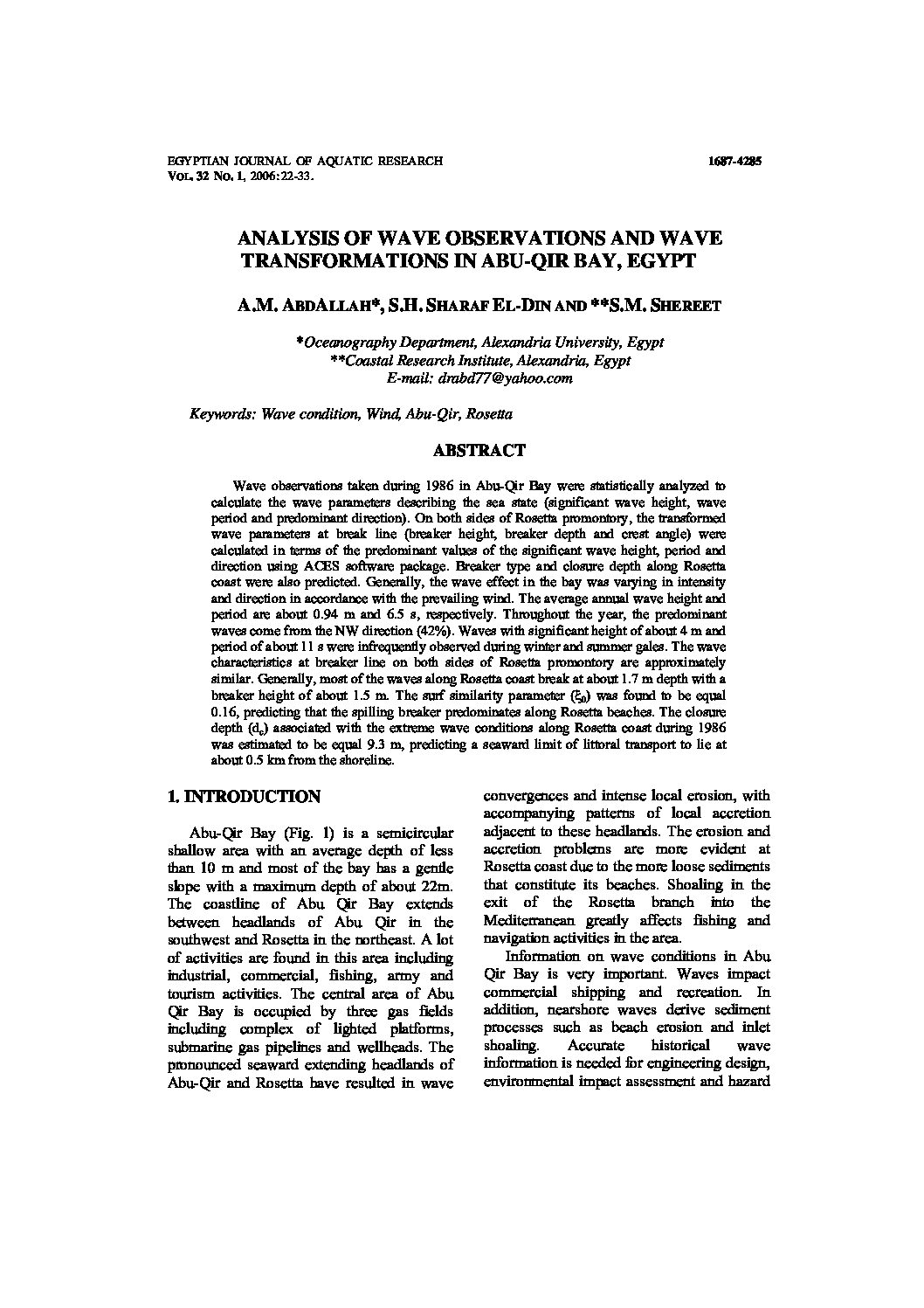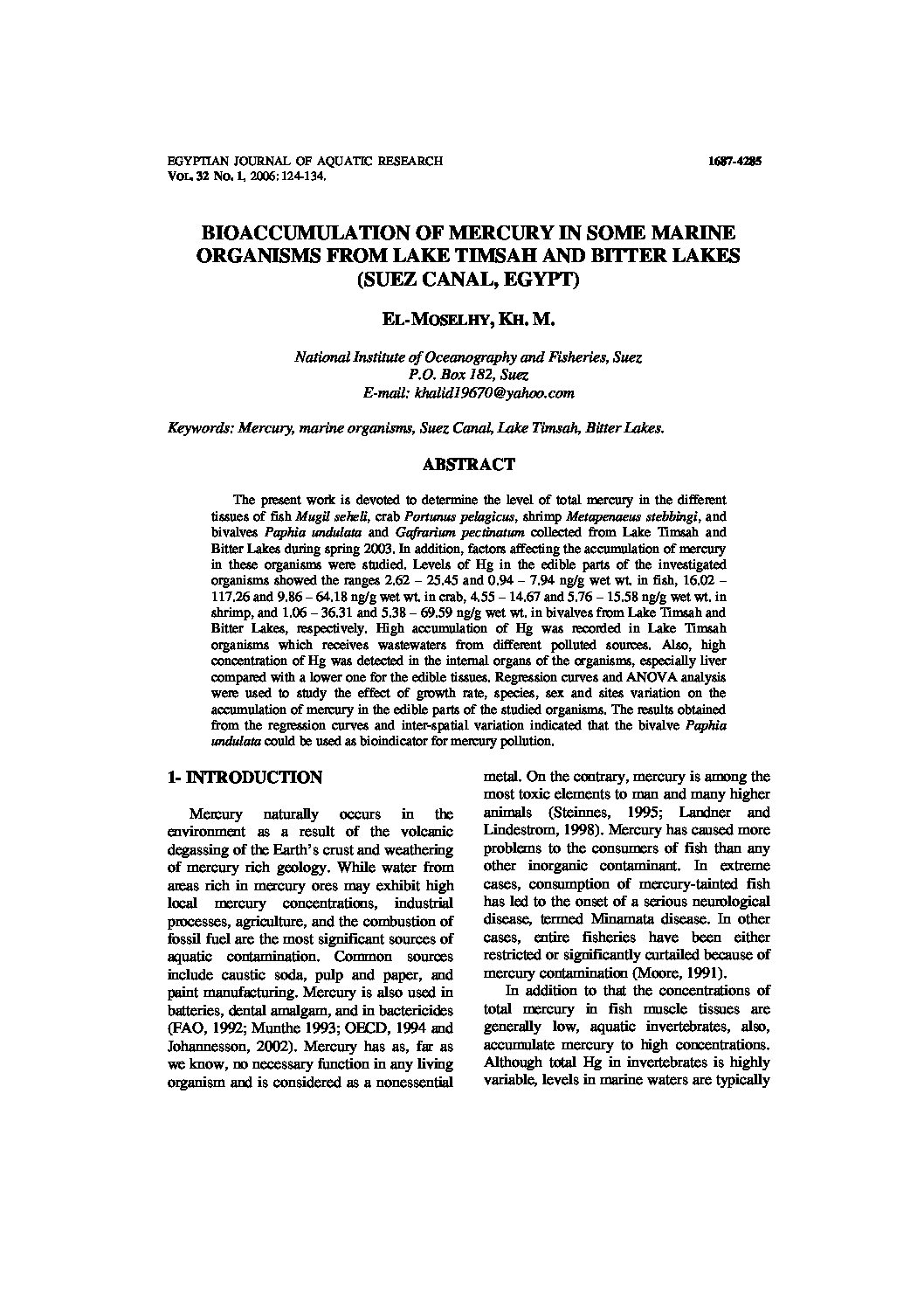Categories
vol-32DISTRIBUTION OF VANADIUM IN BOTTOM SEDIMENTS
FROM THE MARINE COASTAL AREA
OF THE EGYPTIAN SEAS
KH. M. EL-MOSELHY
National Institute of Oceanography and Fisheries, Suez
P.O. Box 182, Suez
E-mail: [email protected]
Keywords: Vanadium, sediments, Mediterranean, Red Sea, Egypt
ABSTRACT
The present study aims to measure the concentration of vanadium in 73
sediment samples collected along the coastal area of the Egyptian seas
(Mediterranean and Red Seas). The results indicated that the mean value of
vanadium in Red Sea sediments (52.61 µg/g) was higher than the mean value of
the Mediterranean (40.58 µg/g) and the variation between the two means was
insignificant (p = 0.241). This result could be attributed to the high petroleum
activities of the Red Sea. Along the Mediterranean coast, the sector in front of
Port Said area exhibited the highest mean value of vanadium (103.9 µg/g) than
other sectors, which suffers from many sources of pollution. While the highest
mean value along the Red Sea coast (73.20 µg/g) was found at the sector of Red
Sea proper. ANOVA analysis showed that the differences in vanadium levels at
the Mediterranean sectors were mostly significant at p < 0.05. While for Red Sea
sectors, the differences were insignificant except that between Red Sea proper and
Aqaba Gulf. Station M10 (at Mediterranean – Port Said sector) and station S2 (at
Red Sea – Suez Bay) recorded values of vanadium higher than the typical
concentration in sediments (20 – 150 µg/g). These two stations receive huge
amount of wastes as industrial and agricultural effluents, sewage discharge, in
addition to shipping activities, fishing ports and ship waiting areas; in particular,
station S2 (Suez Bay) is characterized by petroleum activities.







